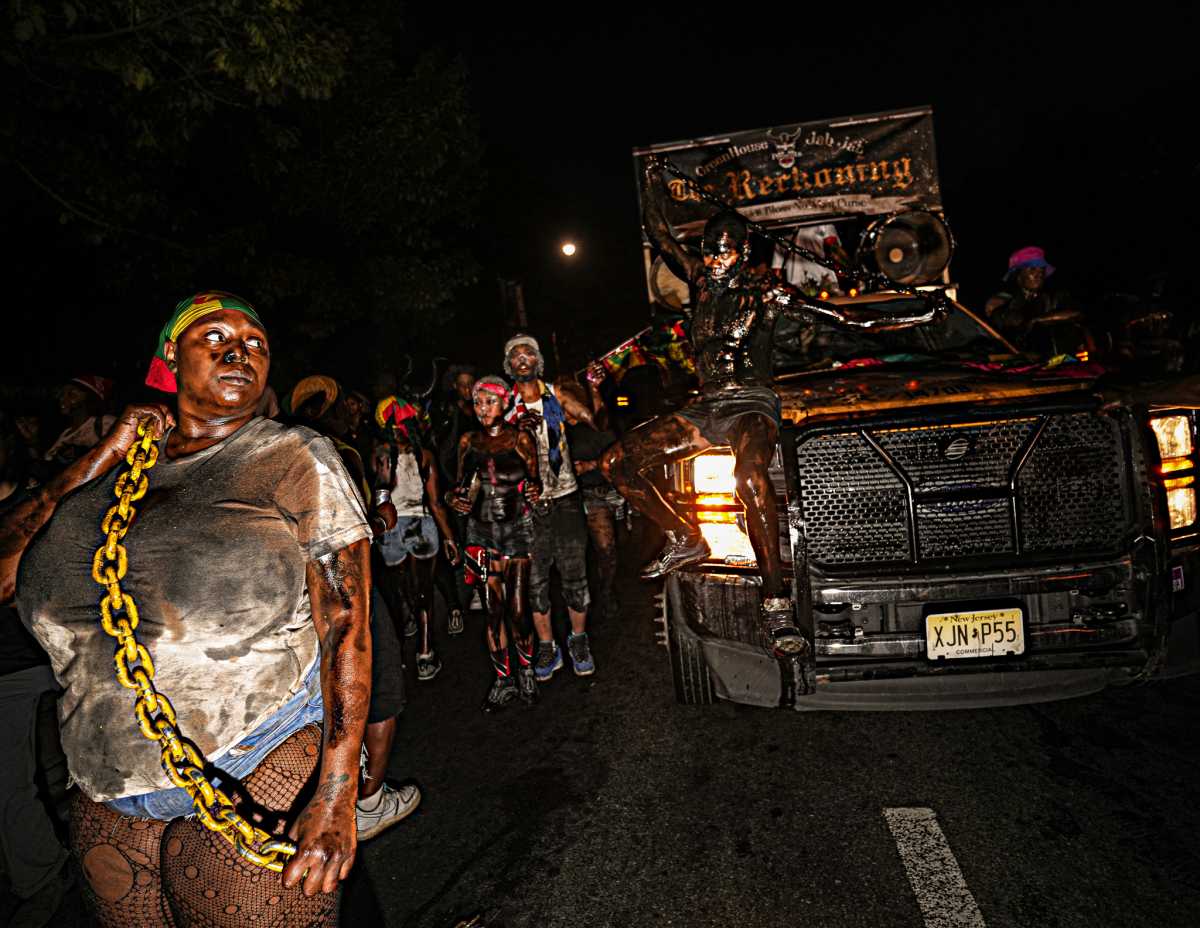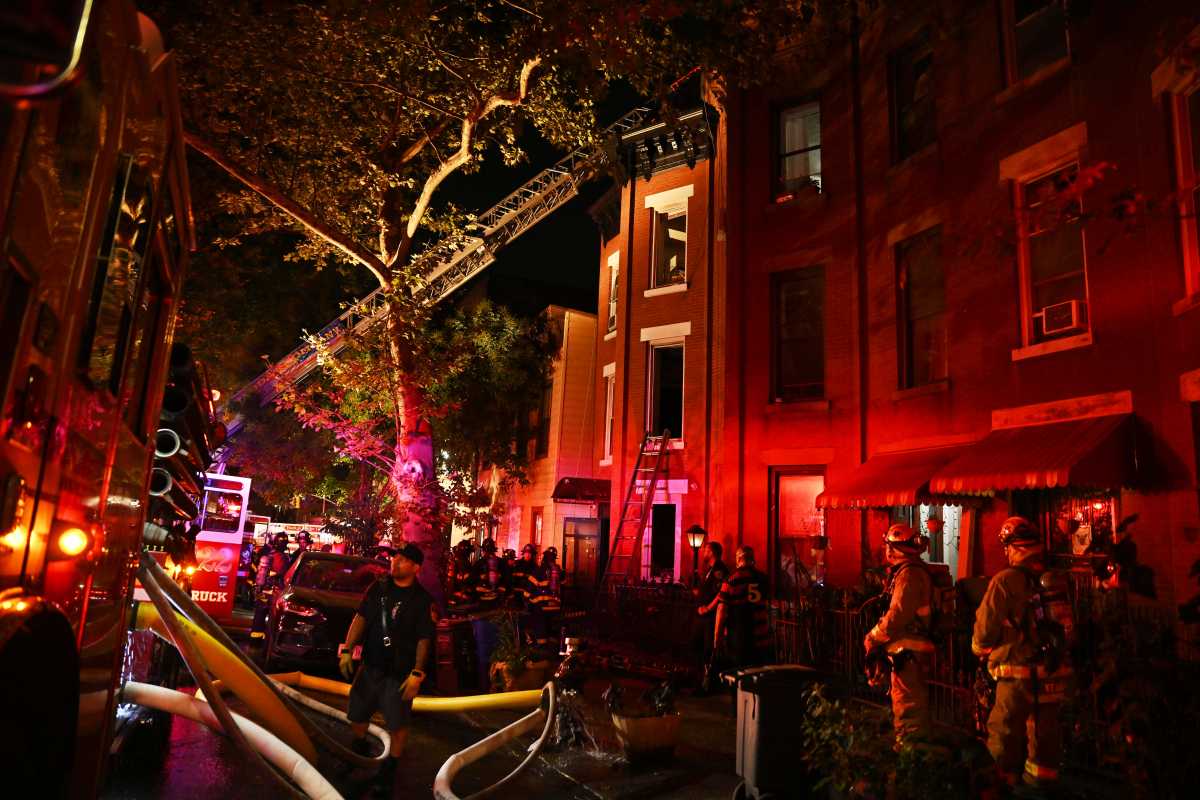Brooklyn Bridge Park’s sponsor unveiled a double surprise Wednesday
night, announcing that state officials had approved a draft plan for the
1.3-mile waterfront development — and that it would include 1,200
units of luxury housing.
Previous estimates had put the number of high-end condos in the residential,
commercial, and open space development at anywhere from 700 to just over
900.
Critics have complained since a reworked Brooklyn Bridge Park plan was
released late last year that planners have strayed from one of the founding
principles intended to guide development of the 80 acre site — that
there be no private housing developments.
But what shocked them even more about this week’s announcement from
the Empire State Development Corp., was that nearly 80 percent of the
housing, some 940 units, would be concentrated on the southern tip of
the park west of Furman Street between Joralemon Street and Atlantic Avenue.
Wendy Leventer, executive director of the Brooklyn Bridge Park Development
Corp. (BBPDC), a subsidiary of the ESDC that is in charge of the park’s
planning and implementation, maintains that the luxury housing is the
only way to raise enough revenue to pay the park’s annual expenses,
estimated at $15.2 million.
Opponents of the park housing, most of them long-time activists in the
fight to get Brooklyn Bridge Park built, were fuming at the news.
“They keep adding on to it,” said Murray Adams, president of
the Cobble Hill Association. “First it was 700, then they were talking
about a thousand, now it’s 1,200.
“It’s been perfectly obvious from the beginning that this thing
was set on the track from Pataki’s office, no matter what anybody
did or said,” said Adams. “The fix was in, as you say.”
His main lament, Adams said, was that none of the community’s efforts
or time in meeting with the BBPDC and lead park architect Michael Van
Valkenburgh over the past months was ultimately valued in the final product.
“Mrs. Leventer has never listened to any suggestions from anybody
— the EIS is out today, and I’ve only looked at it primarily,
but it’s another Slick Willy job,” said Adams, who said he was
fed up with the process and the apathy of elected officials.
“There will be public hearings again in September, and they won’t
do anything either,” he said. “The only thing that can stop
it now is if the elected officials do come out against it. It is unfortunately
a good illustration of how the real estate developers control things in
the city.”
A spokesman for the ESDC declined to comment for this story.
Five hundred of the condo units would be developed at 360 Furman St.,
a former book distribution plant of the Jehovah’s Witnesses that
last year was sold to developer Robert Levine and his partners. Levine
has been working with the BBPDC to incorporate that building into the
park housing plan, which, thanks to legislation passed in June will allow
all tax payments by the building’s residents to be diverted from
public coffers to the park’s maintenance budget. In exchange for
working with the park planners, Levine will have an expedited process
of converting the industrial building to residential use.
The bill awaits Gov. George Pataki’s signature.
The Daily News on July 24 reported that Levine’s development team
includes lobbyist Thomas Murphy, former head of the state Dormitory Authority,
and the AIG Insurance company, which has donated $100,000 to Pataki in
the past three years. Pataki controls the ESDC, which introduced the legislation,
sponsored by Brooklyn state Sens. Martin Connor and Marty Golden and Assemblywoman
Joan Millman.
The legislators reason that the park is getting something — the Paments
in Lieu of Taxes (PILOTs) — for a development that would have gone
through anyway.
Additionally, the project plan adopted this week allows for an additional
two stories to be added to the 180-foot-tall 360 Furman St. building,
an addition that would likely have faced staunch community opposition
were the condo conversion subject to city review due to its placement
at the edge of the Brooklyn Heights waterfront, whose vistas of the East
River, harbor, Manhattan skyline and Statue of Liberty are considered
sacrosanct.
The fast-tracked plan has left many of the local park activists feeling
like public input is being solicited merely for show and that the ESDC
and other officials are going to build Brooklyn Bridge Park the way they
see fit.
Kenn Lowy, a Brooklyn Heights resident who attended many of the meetings
with the developers and Van Valkenburgh over the past several months,
said he was surprised by the approval of the general project plan this
week.
“Nobody I knew on the Citizen’s Advisory Committee [an entity
comprised of community members that was mandated under the state and city’s
agreement to fund construction of the park plan] seemed to be anything
but surprised,” Lowy said of the announcement.
“The EIS just came out yesterday — that was a surprise. I was
busy downloading parts of the EIS and trying to decipher what’s there,”
he said on Wednesday.
Judy Stanton, executive director of the Brooklyn Heights Association,
said the news about 360 Furman St. receiving an additional two stories
wasn’t a big surprise since it had been mentioned in the ESDC’s
scoping document for the EIS that the developer would gain the added height
for his commitment of the building to the park plan.
“We were worried about how that would affect views that people have
now over 360 Furman St,” said Stanton. “The fact that it’s
‘X’ number of more units or more people doesn’t change
the equation for me,” she said, when asked about all the additional
residents that would be thrust into Brooklyn Heights under the plan.
But she maintained hope that community concerns could be worked out. “At
the end of the day, [the plan’s] going to change, and I’m going
to just keep hoping its going to get lower,” Stanton said.
Her counterparts further south don’t think it will.
“We’re paying a very high price in return for a park that doesn’t
have the elements, such as year round recreation facility, that the community
has asked for all along,” said Franklin Stone, a Cobble Hill parent
and advocate for recreational uses in Brooklyn Bridge Park, who is a member
of the CAC.
“I also think that 360 Furman St. is a monstrosity, and I was always
horrified by talk to make it bigger,” she added. “Now we’re
talking about taking the hugest impediment to our park and making it bigger.
My biggest complaint is the price is too high than the return for a park
that that brings nothing back to the community,” said Stone.
A 30-story condo at Furman Street off Atlantic Avenue, on the uplands
of Pier 6, would dwarf 360 Furman St.
Judi Francis, who lives in the southwest section of Brooklyn Heights known
as Willowtown, said she was angry about the 1,200 units of housing announced
this week and charged that the BBPDC had lied about the number of condos
in the plan.
“The outrage is that there is still no admission that the height
of 360 Furman will go higher,” she said. “Now it’s a reality
— it’s going higher.” Francis said none of her neighbors’
concerns had been addressed, including the requested closing of Joralemon
Street to through-traffic onto Furman Street, methods of sound mitigation
from the park and adequate parking to facilitate park patrons.
While none were sure of what the next step would be, other than preparing
statements to submit for the EIS hearing, which is expected to be scheduled
for mid-September, Lowy said he is coordinating a group to serve as advocates
and stewards for Brooklyn Bridge Park.
“We’re going to be meeting with all our elected officials to
discuss the current plan, the EIS and going forward,” Lowy said.





















